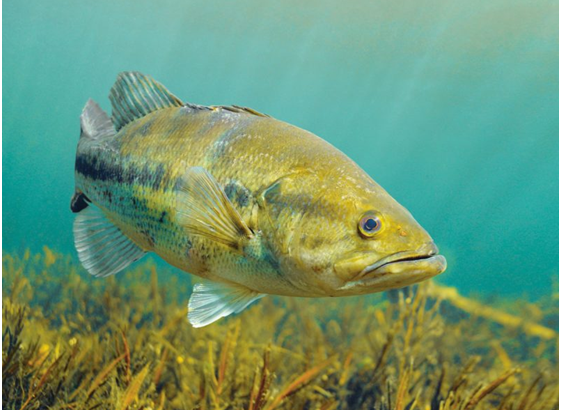It is important to remember that bass is one of the most popular fish species in the US. Therefore, numerous fishers doing fly fishing trips mt of different experience levels and ages choose to catch them.
Since it is a popular way of recreational fishing sport, you should know that it features worldwide popularity, especially in South Africa and Japan.
You should know that this particular type of fishing became one of the largest industries in the world of this specific sport. The main reason for that is because they are simple to find, wherever you live.
The best way to learn more about this particular species is by clicking here for additional info.
They are also tenacious, which is why people enjoy catching aggressive fish and enjoying the excellent adrenaline that comes with it. Remember that this is a form of catch and release sport, which is simple to learn no matter your experience level and age.
Different Types of Bass
Some people consider it a black bass, but you can find a wide array of different types, especially in North America. We are talking about largemouth and smallmouth bass, spotted, Kentucky, Guadalupe, and others.
Even though it seems confusing, you should know that different fish similar exist all across the globe. However, they are not part of black bass, which is a species with talk in here.
The most common examples include Papuan black, American striped, rock bass, British sea, and speckled peacock. As mentioned above, the most common distinction between types includes largemouth and smallmouth.
Even though bait techniques are almost the same, you should know about the differences between these two types. The most significant differences between these two options come between jaw and mouth.
A smallmouth jaw stops at the eyes, while largemouth options feature a jaw beyond its looks. Another essential differences are in coloring. Generally, smallmouth types have a brown head that features tiny greens and light blues with brown/yellow sides and white or silver bottom.
On the other hand, largemouth feature light green sides, dark green overall, and a black bar that goes from tail to gill. They also feature either yellow or white bottom depending on different factors.
Watch this video: https://www.youtube.com/watch?v=dlN_R9bFhLs to learn more about fishing bass.
Fishing Seasons

The main reason for their popularity is the ability to catch them all year long, which is anessential consideration for most anglers. Bass are anglers and abundant, which means that you can cast them in different conditions and seasons.
Of course, it is much more likely to reach and catch them in some seasons, which is something you should remember.
Spring
It is vital to remember that the spring season comes with three different stages based on the bass lifecycle:
- Pre-Spawn – During this particular time of year, bass will prepare for spawning season, which means that they will consume high-protein diets and feed heavily compared with other seasons. Therefore, they are more likely to get to a crawfish, which is why you should create lures that will mimic the appearance of these particular species.
- Spawning Season –When it comes to spawning season, they start to get defensive due to their nests, which is why you should choose baits that feature threatening species. We are talking about crawfish, turtles, and salamanders, which will help you catch them. Of course, spawn season depends on the location you wish to fish.For instance, in the US’s northern states, the bass starts to spawn in late May, while their spawn season starts in March in lower parts.
- Post-Spawn – Finally, you should know that males stay to protect the nest while females leave in deeper waters during this particular season. Therefore, you should use topwater baits to catch males while finding females in warmer areas of deeper waters.
Summer
Since water starts to heat during hot summer days, you should know that bass tends to seek areas with cold temperatures. Therefore, you can find them in deep grass points and lines, next to creek channels and off the ledges.
Keep in mind that they seek crawfish, bluegill, and shad during this particular season, which is why you should use lures that will mimic these species.
Fall
As soon as fall comes, you should know that water will start to cool down, while nutrient buildup will cause the shad to go to incoming waters. Therefore, you should begin fishing next to creeks, which will ensure that you find numerous bass before the winter starts.
We recommend you to use heavy baits that will fall next to a shad, which should feature slow and aim movements to ensure you get what you wanted in the first place.
Winter
Finally, winter months are perfect because feeding opportunities for them get lower, which is why you should take advantage of this particular situation.
Since its metabolism will slow down in cold waters, it means it won’t feed as often as in spring or summer.
Therefore, it is challenging to catch them in this particular season, which is an important factor to remember.
As a result, you should choose a slow retrieve and large bait to help you out with the process.
Final Word
If you wish to find bass during your fishing journey, you should focus on different areas to ensure the best course of action.
You can choose a wide array of options depending on the area you live in and the season. The first step you should take is to locate contour changes within your area.
As soon as you visit Bass N Edge official website, you will learn more about catching and fishing with ease.
These points are the safest bets you can determine. We are talking about areas with shallow water before you enter a deep. You can find them next to creeks, coves, and the main lake, which is vital to remember.





